
Other names:
stitchwort, starwort, white bird's eye, chick wittles, satin flower, adder's mouth, mouse ear, starweed, passerina, tongue grass, winter weed, Capiqui, Hierba Gallinera, Mouron des Oiseaux, Pamplina, Star Chickweed, chickenwort, craches and maruns.
Chickweed (Stellaria media ) is a member of the Caryophyllaceae, or carnation, family Chickweed is native to European regions but has long been widely available in the wild and cultivated in other temperate locations.
The Stellaria media or common chickweed belongs to about 25 species including some native varieties in North America, growing abundantly in the wild which are closely related to but lacks the nutritional value and medicinal effectiveness of the common chickweed.
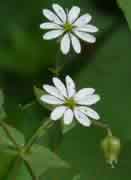 Chickweed is an annual herb, widespread in temperate regions, growing in large, dense patches. Chickweed grows only a few inches from the ground creeping and forming dense mats. The creeping stems have pubescent or hairs only on one side alternating after every node. When the stem is broken it has no milky sap unlike its relatives where the stems are completely covered with hair and has milky sap. The roots are shallow and fibrous. Chickweed leaves are bright green, opposite, simple, broadly oval, about an inch apart in the stem and usually less than 1 inch long. Chickweeds have small, white, 5 petal star shaped flowers that bloom during spring.
Chickweed is an annual herb, widespread in temperate regions, growing in large, dense patches. Chickweed grows only a few inches from the ground creeping and forming dense mats. The creeping stems have pubescent or hairs only on one side alternating after every node. When the stem is broken it has no milky sap unlike its relatives where the stems are completely covered with hair and has milky sap. The roots are shallow and fibrous. Chickweed leaves are bright green, opposite, simple, broadly oval, about an inch apart in the stem and usually less than 1 inch long. Chickweeds have small, white, 5 petal star shaped flowers that bloom during spring.
Common chickweeds are edible and considered very nutritious. The common name came from the herb's appeal to fowls, particularly to chickens. Common chickweed is used as leaf vegetable in salads.
Active constituents that are found in Chickweed include the following: Saponin glycosides, Coumarins and hydroxycoumarins, Flavonoids, Carboxylic acids, Triterpenoids, Vitamin C, about l50-350mg per l00g. . The combination of these chemicals provide the claimed health benefits of Chickweed although limited scientific research would support these claims.
Kidney and Liver Tonic. Common chickweed has long been used in folkloric medicine as tonic to cleanse the kidney and liver. Chickweed can be eaten raw mixed with salad or prepared and taken as tea.
Treatment of Skin Problems. Among the many claimed health benefits from chickweed is its ability to heal skin wounds. It is used as a poultice to treat boils, cuts, burns, abscesses and ulcers. Chickweed is also used to treat itchiness associated with eczema and psoriasis.
Anti-inflammatory and Pain Reliever. Another health benefit from Chickweed is it ability to act against inflammation and pain. It is used to treat rheumatism, arthritis and menstrual pain.
Health Benefits for Stomach Problems. Chickweed is also used to treat constipation, upset stomach and to promote digestion.
Chickweed for Lung problems. Chickweed is also used to treat asthma and other respiratory problems such as couch and colds.
It is believed that the vitamin C in Chickweed can help boost body resistance and can even be used to treat scurvy.
Stellaria media (Linn.) Villars is a traditional Chinese medicine that has been used for over 200 years, mainly for the treatment of dermatitis and other skin diseases. It has also been used as an anti-viral agent. All the fresh chickweed juice samples used in this study were prepared using macroporous resin and ultrafiltration technology. The anti-hepatitis B virus (HBV) activity of S. media was evaluated in vitro using the human HBV-transfected liver cell line HepG2.2.15. The concentrations of hepatitis B surface antigen (HBsAg) and hepatitis B e antigen (HBeAg) in HepG2.2.15 cell culture medium were determined by enzyme-linked immunosorbent assay (ELISA) after S. media-n (SM-n) treatment for 6 or 9 days. HBV DNA was quantified using transcription-mediated amplification and real-time polymerase chain reaction. In HepG2.2.15 cells, 30 μg/mL SM-3 effectively suppressed the secretion of HBsAg and HBeAg with inhibition rates of 27.92% and 25.35% after 6 days of treatment, respectively. Consistent with the reduction in HBV antigens, SM-3 also reduced the level of HBV DNA in a dose-dependent manner. The characterization and quantitation of the chemical composition of SM-3 showed the presence of flavonoid C-glycosides, polysaccharides, and protein, which exhibited diverse antiviral activities. In conclusion, our results demonstrate that SM-3 possesses potential anti-HBV activity in vitro. This is the first report demonstrating the anti-HBV effects of S. media, which is currently under early development as a potential anti-HBV drug candidate. Source: Molecules. 2012 Jul 18;17(7):8633-46.
In a previous study we found that in chickweed the expression level of the pro-SmAMP2 gene was comparable or even higher to that of the β-actin gene. This high level of the gene expression has attracted our attention as an opportunity for the identification of novel strong promoters of plant origin, which could find its application in plant biotechnology. Therefore, in the present study we focused on the nucleotide sequence identification and the functional characteristics of the pro-SmAMP2 promoter in transgenic plants. In chickweed (Stellaria media), a 2120 bp promoter region of the pro-SmAMP2 gene encoding antifungal peptides was sequenced. Six 5′-deletion variants −2120, −1504, −1149, −822, −455, and −290 bp of pro-SmAMP2 gene promoter were fused with the coding region of the reporter gene gusA in the plant expression vector pCambia1381Z. Independent transgenic plants of tobacco Nicotiana tabacum were obtained with each genetic structure. GUS protein activity assay in extracts from transgenic plants showed that all deletion variants of the promoter, except −290 bp, expressed the gusA gene. In most transgenic plants, the GUS activity level was comparable or higher than in plants with the viral promoter CaMV 35S. GUS activity remains high in progenies and its level correlates positively with the amount of gusA gene mRNA in T3 homozygous plants. The activity of the рro-SmAMP2 promoter was detected in all organs of the transgenic plants studied, during meiosis and in pollen as well. Our results show that the рro-SmAMP2 promoter can be used for target genes expression control in transgenic plants. Source: BMC Biotechnol. 2016; 16: 43.
Chickweed plant is cultivated and can be planted in your garden, seeds or young plant can be sourced through local horticulturist.
Chickweed is also commercially prepared as tincture, powder, capsule, cream and dried herb forms. Chickweed supplements are available in most fitness and health stores. Chickweed is also available online via Amazon as listed: Organic Chickweed Herb, there are other brands, be sure to select one from a reputable manufacturer and do follow the suggested dosage.
Take a handful of clean fresh chickweed plant and add to a glass of desired fruit juice (pineapple, orange, apple etc,). Use a blender to mix, you can add ice to enjoy a cold drink, can be taken twice a day.
Fresh chickweed plant are crushed and applied topically on the affected area. Crushed chickweed plant can also be added to a warm bath.

You can add other herbs or honey to improve the efficacy and taste (See cautions and side effects).
Generally safe. Chickweed is considered safe for most adults if taken in food amounts or as herbal medicine.
Pregnancy and breast-feeding: There are no sufficient studies done to determine the safe use of Chickweed herbal medicine during pregnancy and breast feeding. It is best to avoid its use.
Just like in any other herbal medicines, moderation of use is recommended. Prolonged use is discouraged.
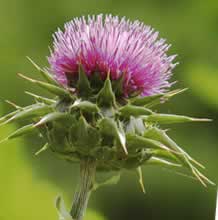 Silymarin extract still tops in liver protection
Silymarin extract still tops in liver protection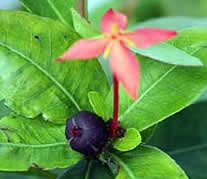 Santan Flower has wound healing properties
Santan Flower has wound healing properties 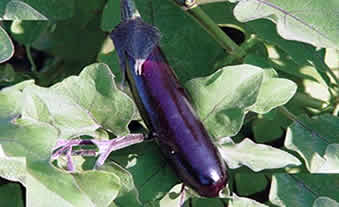 Antioxidant properties from Talong
Antioxidant properties from Talong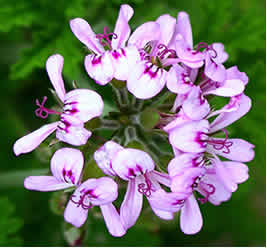 Malvarosa Plant found to have antioxidant properties
Malvarosa Plant found to have antioxidant properties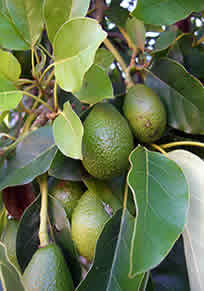 Anti-cancer properties of Avocado fruit
Anti-cancer properties of Avocado fruit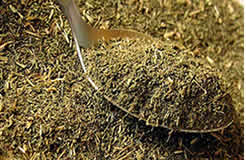 Stevia use can cause cancer, studies suggests
Stevia use can cause cancer, studies suggests